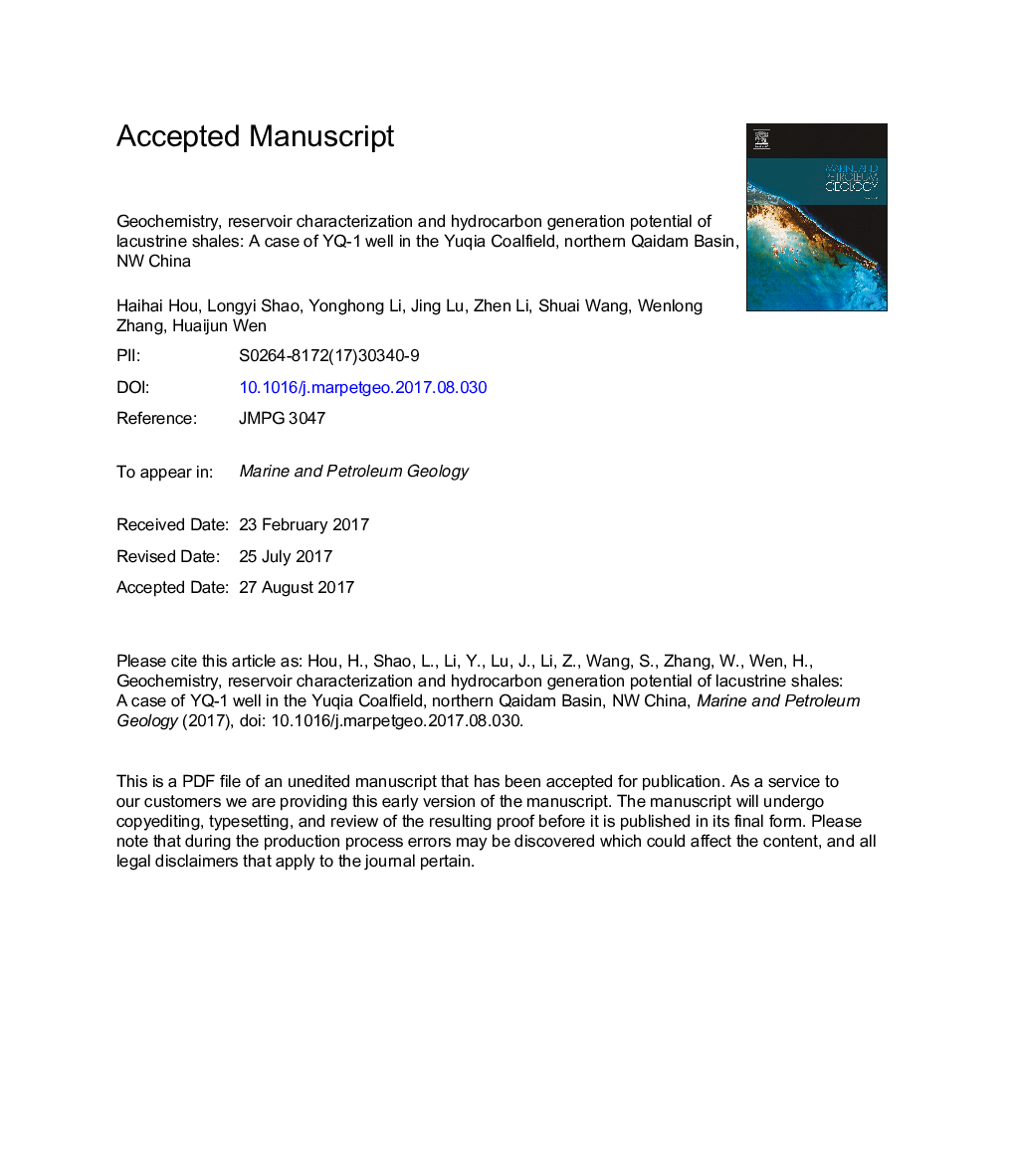| کد مقاله | کد نشریه | سال انتشار | مقاله انگلیسی | نسخه تمام متن |
|---|---|---|---|---|
| 8909329 | 1637139 | 2017 | 26 صفحه PDF | دانلود رایگان |
عنوان انگلیسی مقاله ISI
Geochemistry, reservoir characterization and hydrocarbon generation potential of lacustrine shales: A case of YQ-1 well in the Yuqia Coalfield, northern Qaidam Basin, NW China
دانلود مقاله + سفارش ترجمه
دانلود مقاله ISI انگلیسی
رایگان برای ایرانیان
کلمات کلیدی
موضوعات مرتبط
مهندسی و علوم پایه
علوم زمین و سیارات
زمین شناسی اقتصادی
پیش نمایش صفحه اول مقاله

چکیده انگلیسی
Ever since a breakthrough of marine shales in China, lacustrine shales have been attracting by the policy makers and scientists. Organic-rich shales of the Middle Jurassic strata are widely distributed in the Yuqia Coalfield of northern Qaidam Basin. In this paper, a total of 42 shale samples with a burial depth ranging from 475.5 m to 658.5 m were collected from the Shimengou Formation in the YQ-1 shale gas borehole of the study area, including 16 samples from the Lower Member and 26 samples from the Upper Member. Geochemistry, reservoir characteristics and hydrocarbon generation potential of the lacustrine shales in YQ-1 well were preliminarily investigated using the experiments of vitrinite reflectance measurement, maceral identification, mineralogical composition, carbon stable isotope, low-temperature nitrogen adsorption, methane isothermal adsorption and rock eval pyrolysis. The results show that the Shimengou shales have rich organic carbon (averaged 3.83%), which belong to a low thermal maturity stage with a mean vitrinite reflectance (Ro) of 0.49% and an average pyrolytic temperature of the generated maximum remaining hydrocarbon (Tmax) of 432.8 °C. Relative to marine shales, the lacustrine shales show low brittleness index (averaged 34.9) but high clay contents (averaged 55.1%), high total porosities (averaged 13.71%) and great Langmuir volumes (averaged 4.73 cmâ3 g). Unlike the marine and marine-transitional shales, the quartz contents and brittleness index (BI) values of the lacustrine shales first decrease then increase with the rising TOC contents. The kerogens from the Upper Member shales are dominant by the oil-prone types, whereas the kerogens from the Lower Member shales by the gas-prone types. The sedimentary environment of the shales influences the TOC contents, thus has a close connection with the hydrocarbon potential, mineralogical composition, kerogen types and pore structure. Additionally, in terms of the hydrocarbon generation potential, the Upper Member shales are regarded as very good and excellent rocks whereas the Lower Member shales mainly as poor and fair rocks. In overall, the shales in the top of the Upper Member can be explored for shale oil due to the higher free hydrocarbon amount (S1), whereas the shales in the Lower Member and the Upper Member, with the depths greater than 1000 m, can be suggested to explore shale gas.
ناشر
Database: Elsevier - ScienceDirect (ساینس دایرکت)
Journal: Marine and Petroleum Geology - Volume 88, December 2017, Pages 458-471
Journal: Marine and Petroleum Geology - Volume 88, December 2017, Pages 458-471
نویسندگان
Haihai Hou, Longyi Shao, Yonghong Li, Jing Lu, Zhen Li, Shuai Wang, Wenlong Zhang, Huaijun Wen,